Every time I stand at the base of a mountain, I sense something ancient and powerful.
Something that challenges me to look up, to climb, to connect.
Mountains for me are not just rock and ice, but stories waiting to be explored.
This is my personal guide to the most beautiful mountains in the US, a journey to peaks that have captured my imagination and left a permanent mark on my soul.
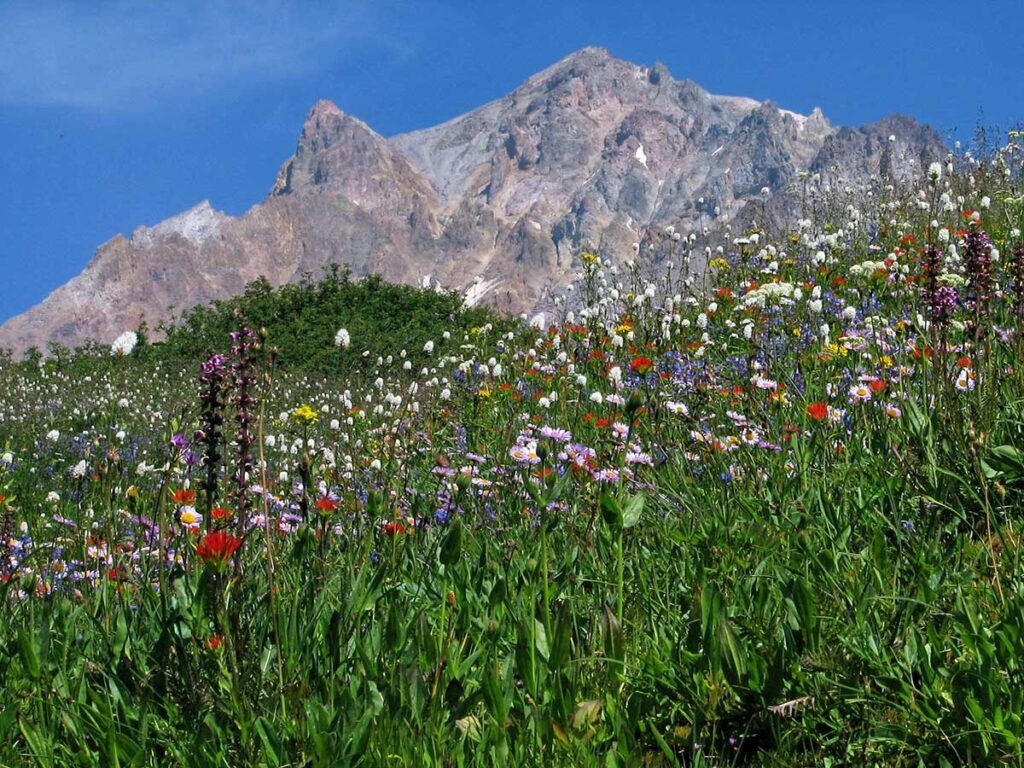
Contents
- 1 America’s Most Beautiful Mountains & Trails at a Glance
- 2 The Majestic West Coast & Alaska: Some of the Most Beautiful Mountains in the US
- 3 California’s Giants and the Best Mountain Trails in the US
- 4 The Rugged Rockies: More of the Most Beautiful Mountains in the US
- 5 Historic Peaks of the East & Pacific: Finding the Best Mountain Views
- 6 Go Get Them Mountain Boots Ready
America’s Most Beautiful Mountains & Trails at a Glance
For each of these giants, I’ll share the one trail that truly unlocks its heart.
We’re going beyond the postcard photos to find the paths that deliver the best mountain views and create memories that last a lifetime.
Mountain
State
Featured Trail
Difficulty
Distance (RT)
Mount Rainier
WA
Skyline Trail
Moderate
5.4 mi
Denali
AK
Horseshoe Lake Trail
Easy
2.1 mi
Mount Hood
OR
Paradise Park from Timberline
Hard
9.6 mi
Half Dome
CA
Half Dome Day Hike
Strenuous
14−16 mi
Mount Whitney
CA
Mount Whitney Trail
Strenuous
22 mi
Mount Shasta
CA
Avalanche Gulch Route
Strenuous
11 mi
The Maroon Bells
CO
Crater Lake Trail
Moderate
3.6 mi
Pikes Peak
CO
Barr Trail
Strenuous
24 mi
Mount Sneffels
CO
Yankee Boy Basin Route
Strenuous
6 mi
Grand Teton
WY
Cascade Canyon Trail
Moderate
9.4 mi
Glacier NP Peaks
MT
The Highline Trail
Strenuous
11.8 mi
Mount Washington
NH
Tuckerman Ravine Trail
Strenuous
7.2 mi
Mount Le Conte
TN
Alum Cave Trail
Strenuous
10 mi
Mauna Kea
HI
Humuʻula Trail
Strenuous
13.8 mi
The Majestic West Coast & Alaska: Some of the Most Beautiful Mountains in the US
The Pacific Ring of Fire blessed this region with dramatic, volcanic, and heavily glaciated peaks.
They are giants of impossible scale, creating their own weather and demanding respect.
1. Mount Rainier, Washington: The Glaciated Volcano

Looming over Seattle like a watchful guardian, Mount Rainier is an active stratovolcano of immense power and beauty.
Standing at 14,410 feet, its glaciated peak generates its own weather, leading to some of the highest snowfall totals on Earth.
Can’t-Miss Trail: Skyline Trail to Panorama Point
This is a world-class hike, famous for the explosion of wildflowers that carpets its meadows each summer.
The trail begins on stone steps at Paradise, ascending through fields of avalanche lilies and paintbrush.
All the while, the Nisqually Glacier and Rainier’s summit dominate the view.
The reward at Panorama Point is a breathtaking vista of the Tatoosh Range and, on clear days, distant volcanoes like Mount Adams and Mount St. Helens.
- Trail at a Glance: Moderate, 5.4-mile loop, 1,700 ft gain, 3−5 hours.
- Know Before You Go: Hike from mid-July to mid-October for peak wildflowers. A timed-entry reservation is now required for the Paradise corridor, so book in advance. Parking fills by 8 AM on summer weekends.
2. Denali, Alaska: The Great One
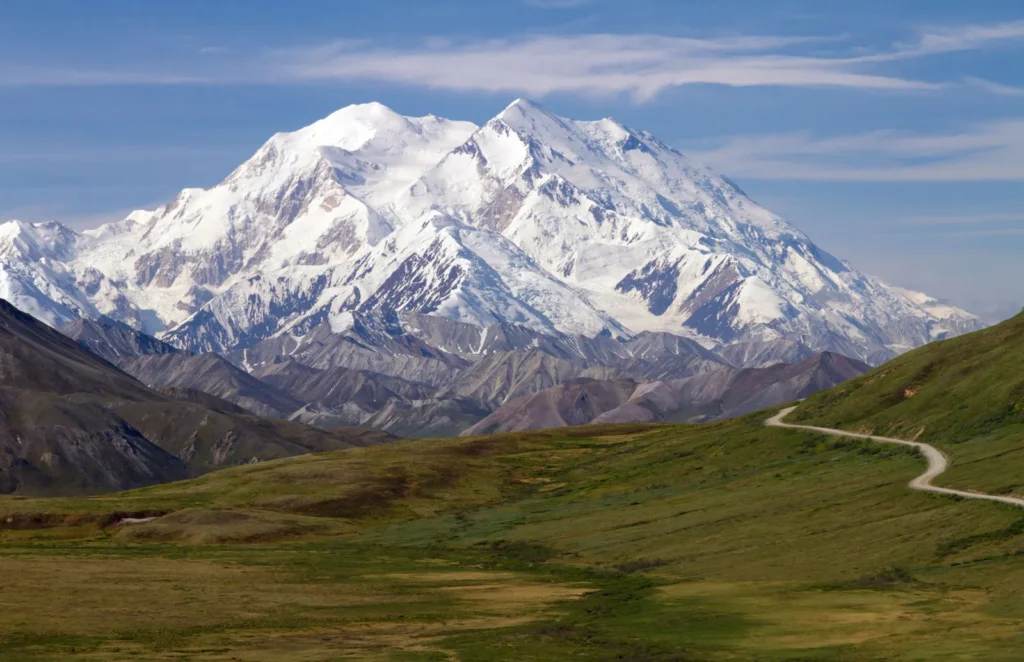
At 20,310 feet, Denali is the tallest mountain in North America from base to summit. It sits within a six-million-acre, largely trail-less wilderness, embodying a raw, untamed spirit.
Can’t-Miss Trail: Horseshoe Lake Trail
You don’t need to be an elite mountaineer to feel Denali’s magic.
This accessible trail offers a concentrated dose of its grandeur. The path descends to a stunning blue lake where you can spot beaver dams and the powerful Nenana River, all under the shadow of immense mountainsides.
It’s a huge reward for a relatively small effort.
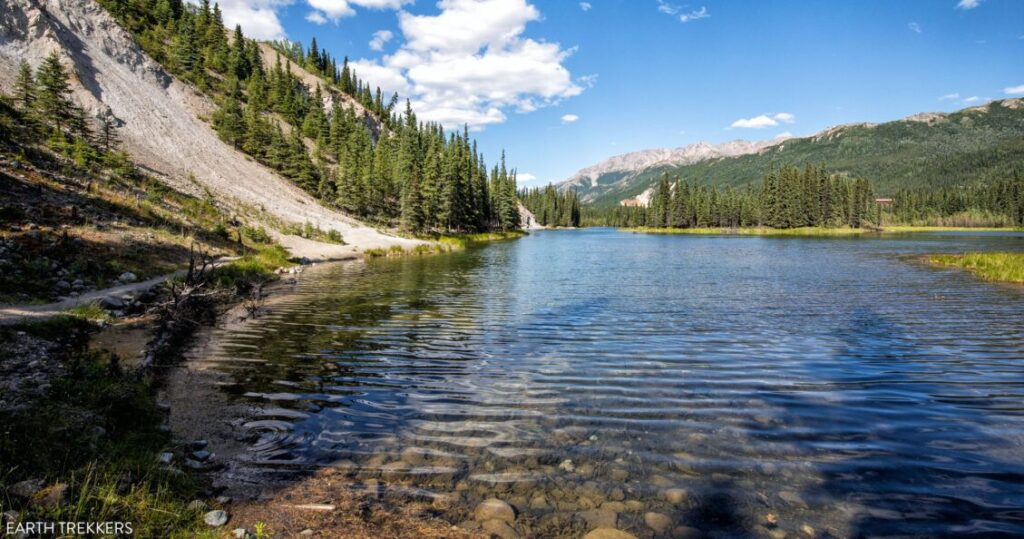
- Trail at a Glance: Easy, 2.1-mile loop, 300 ft gain, 1−2 hours.
- Know Before You Go: The best hiking season is June through mid-October. The trailhead is near the park entrance, so you don’t need to use the park’s bus system. This is prime wildlife habitat, so stay aware and give animals space.
3. Mount Hood, Oregon: The Year-Round Playground
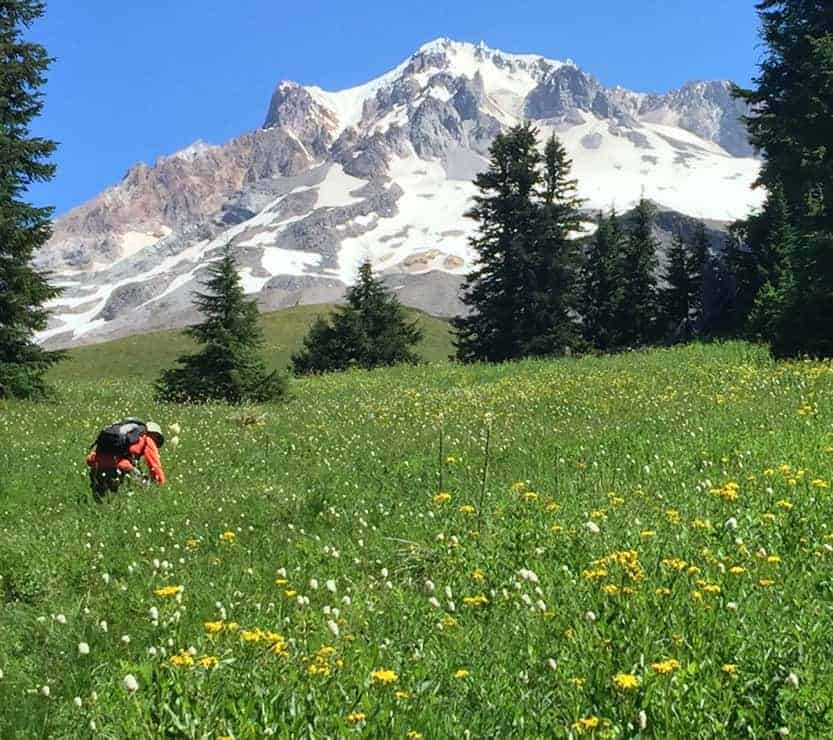
Portland’s iconic peak, Mount Hood, is a solitary stratovolcano whose 12 glaciers allow for skiing almost year-round.
Topped by the historic Timberline Lodge, it’s a true hub of alpine recreation.
Can’t-Miss Trail: Paradise Park from Timberline Lodge
This is the quintessential Mount Hood experience. The trail winds through lush meadows and across creeks, bursting with wildflowers in summer.
The main event is the constant, jaw-dropping view of Mount Hood itself. On a clear day, you can even spot other Cascade peaks in the distance.
It’s a tough hike, but it delivers the best views on the mountain.
- Trail at a Glance: Hard, 9.6-mile loop, 2,500 ft gain, 5+ hours.
- Know Before You Go: Hike in summer or early fall for wildflowers and snow-free paths. The trail starts from the famous Timberline Lodge, an attraction in its own right. Always check conditions, as river crossings in the area can be hazardous.
California’s Giants and the Best Mountain Trails in the US
From the sheer granite of the Sierra Nevada to a solitary northern volcano, California’s peaks are defined by challenge and beauty.
Permits and preparation are the keys to unlocking these legendary adventures.
4. Half Dome, Yosemite National Park, California
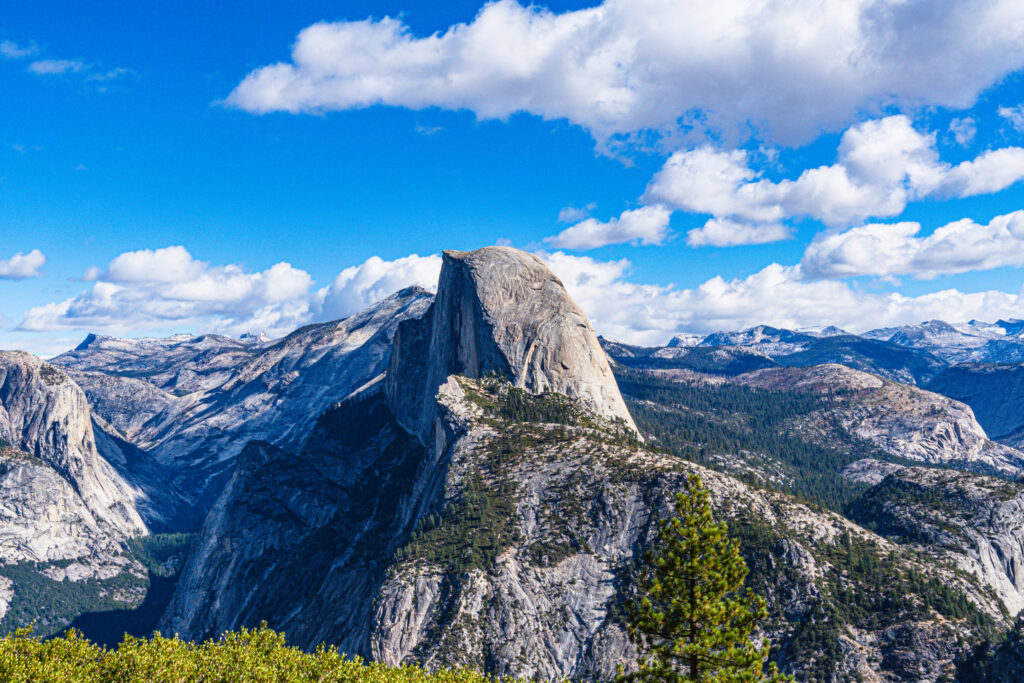
One of the most recognizable rock formations on the planet, Half Dome is a granite monolith rising nearly 5,000 feet from the Yosemite Valley floor.
Can’t-Miss Trail: The Half Dome Day Hike
This is a true bucket-list adventure. The journey is an arduous trek past Vernal and Nevada Falls before the final, thrilling ascent up the famous steel cables.
Pulling yourself up the last 400 feet on that slick granite is a test of nerve and strength. The 360-degree view from the top is a prize you’ll never forget.
- Trail at a Glance: Strenuous, 14−16-mile round-trip, 4,800 ft gain, 10−12 hours.
- Know Before You Go: A permit is mandatory and awarded through a highly competitive lottery in March. The cables are typically up from late May to early October. This hike is extremely dangerous in wet weather.
5. Mount Whitney, California: The Roof of the Lower 48
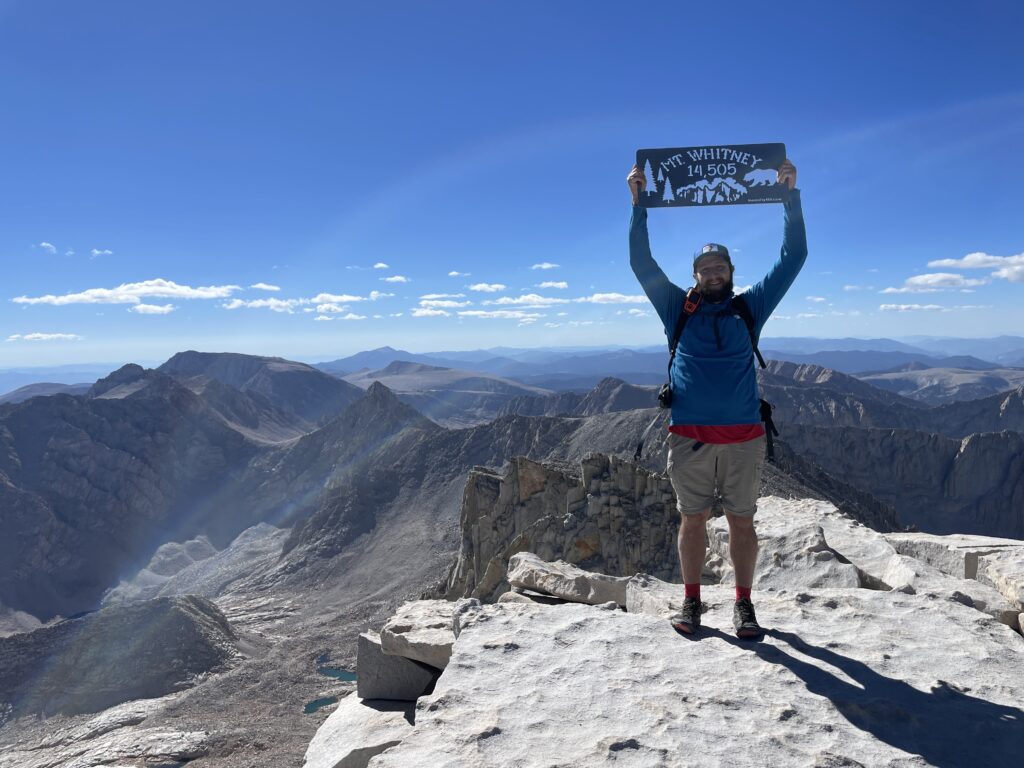
At 14,505 feet, Mount Whitney is the highest peak in the contiguous United States. It’s the grand finale of the 211-mile John Muir Trail and a monumental challenge in its own right.
Can’t-Miss Trail: The Mount Whitney Trail
This is a massive undertaking. The 22-mile round-trip trail challenges even the fittest hikers with its length and altitude.
The path climbs steadily from Whitney Portal, passing alpine lakes before tackling the infamous 99 switchbacks to Trail Crest.
The final push along the ridgeline to the summit is an unforgettable high-altitude experience.
- Trail at a Glance: Strenuous, 22-mile round-trip, 6,200 ft gain, 12−14 hours.
- Know Before You Go: The trail is typically snow-free from July to September. A permit is required year-round and allocated via a competitive lottery. Altitude sickness is a major risk; acclimatize properly.
6. Mount Shasta, California: The Mystical Volcano
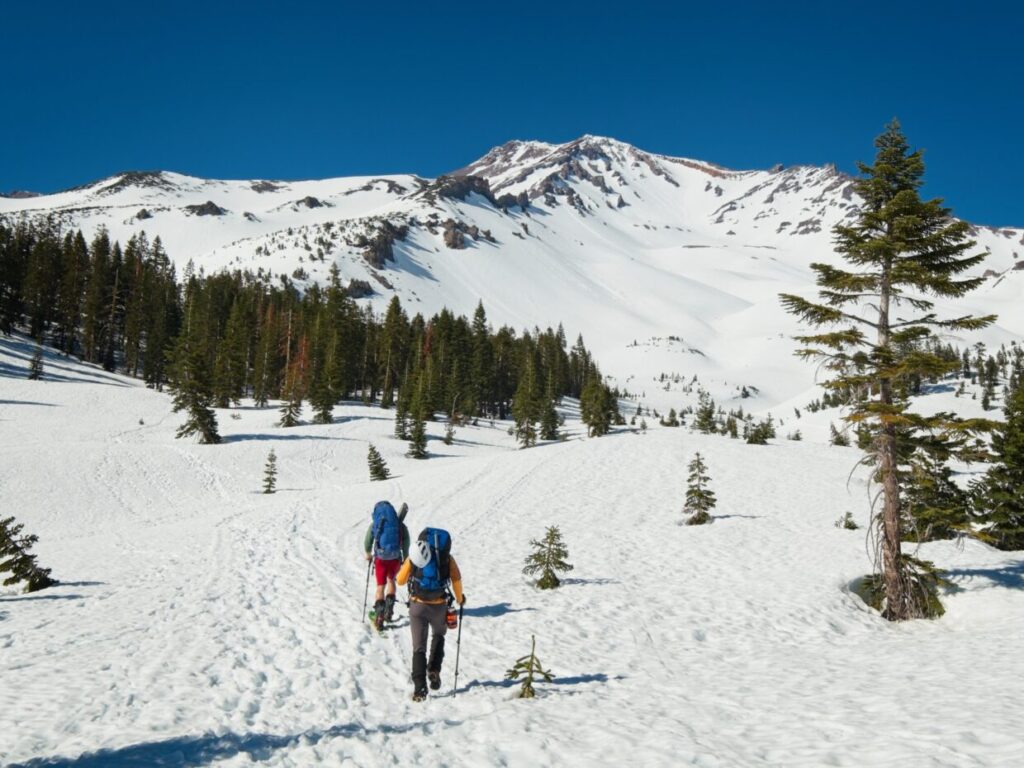
Mount Shasta is a massive, solitary volcano in Northern California, a place of immense spiritual significance.
Let’s be clear: this isn’t a hike. It’s your first step into the world of mountaineering.
Can’t-Miss Trail: Avalanche Gulch Route
This is the most popular route, but it’s a serious snow climb, not a trail.
The journey involves a pre-dawn start, ascending steep snow slopes with an ice axe and crampons.
You’ll climb from Horse Camp to a high camp at Helen Lake, then push for the summit via the Red Banks and the false summit of Misery Hill.
- Trail at a Glance: Strenuous/Basic Alpine Climb, 11-mile round-trip, 7,200 ft gain, 2 days.
- Know Before You Go: Prime season is mid-May to mid-July for good snow cover. A helmet, ice axe, and crampons are mandatory, and you must know how to use them.
The Rugged Rockies: More of the Most Beautiful Mountains in the US
Colorado and Wyoming are home to the “fourteener” culture, where bagging peaks over 14,000 feet is a way of life.
These mountains offer everything from picture-perfect scenes to raw, challenging scrambles.
7. The Maroon Bells, Colorado: The Most Photographed Peaks
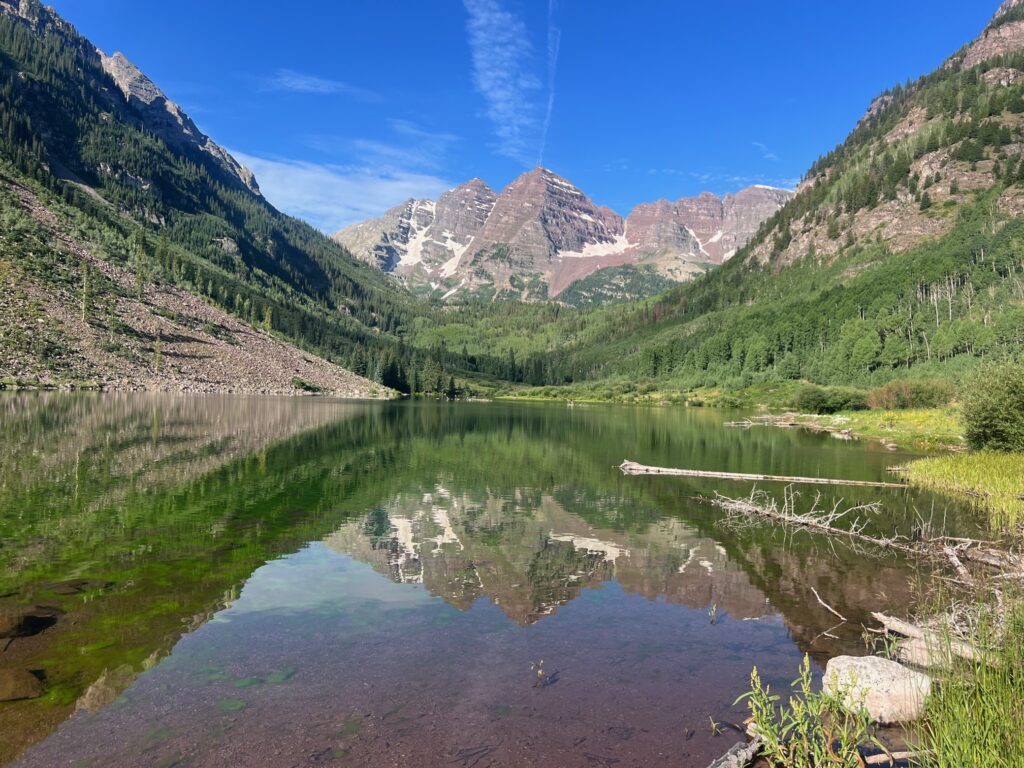
The Maroon Bells are the poster children for the Colorado Rockies, and for good reason.
Their distinctive bell shape and reddish hue create a scene of almost impossible beauty, especially when reflected in Maroon Lake.
Can’t-Miss Trail: Crater Lake Trail
To get beyond the postcard view, take this trail. It’s a moderately steep and rocky path that winds through stunning aspen groves to Crater Lake, which sits right at the base of the towering peaks.
The experience is far more intimate and immersive than the view from the parking lot.
- Trail at a Glance: Moderate, 3.6-mile round-trip, 700 ft gain, 2.5 hours.
- Know Before You Go: Fall is magical when the aspens turn gold. Reservations for the shuttle bus or for parking are mandatory and sell out months in advance. Plan ahead!.
8. Pikes Peak, Colorado: America’s Mountain
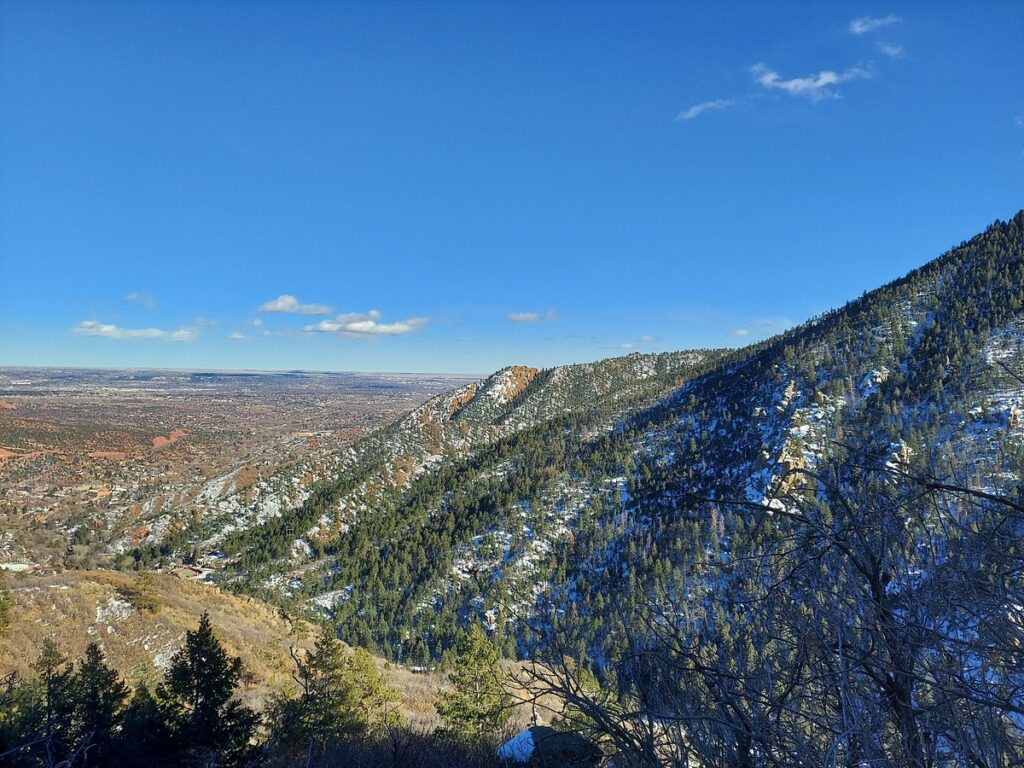
This is one of the world’s most famous peaks, the inspiration for “America the Beautiful“.
You can join the crowds at the summit via car or cog railway, or you can earn it.
For those who choose the latter, there is the Barr Trail.
Can’t-Miss Trail: Barr Trail
This is one of America’s toughest day hikes. It’s a relentless 13-mile, one-way slog gaining over 7,500 vertical feet from Manitou Springs to the summit.35 To stand on that summit, having arrived on your own two feet, is a profound achievement.
- Trail at a Glance: Strenuous, 13-mile one-way, 7,800 ft gain, 6−10 hours (one-way).
- Know Before You Go: Summer is the best season. You must arrange transportation down from the summit. Start before dawn to avoid dangerous afternoon thunderstorms.
9. Mount Sneffels, Colorado: The Jagged Heart of the San Juans
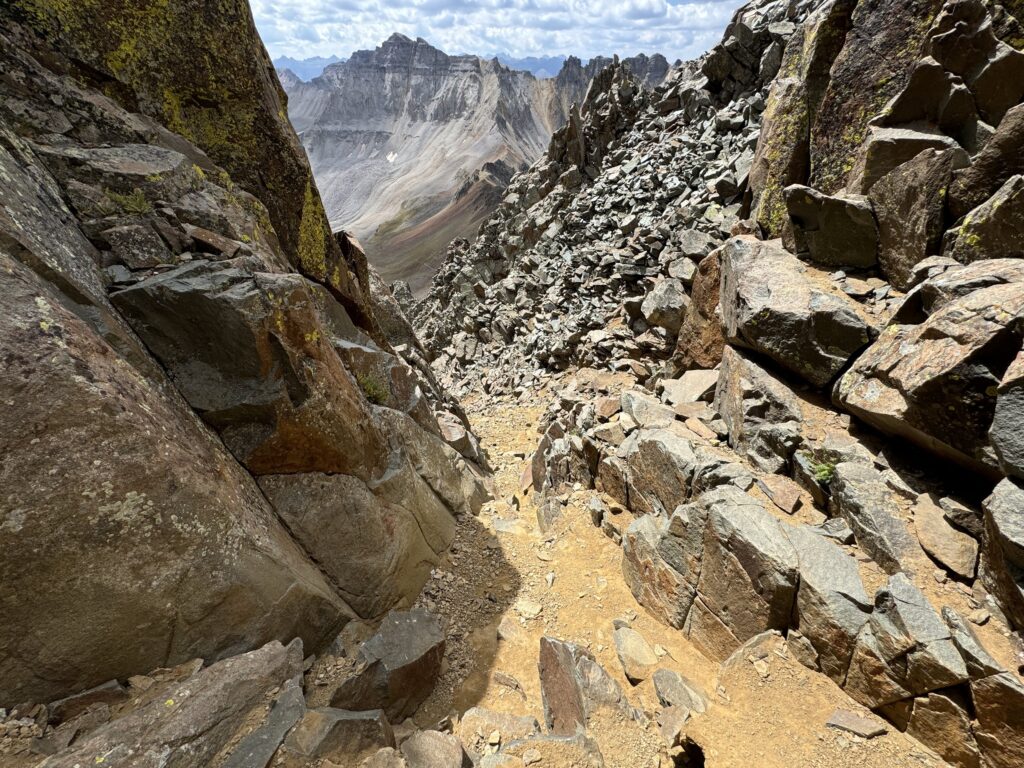
Mount Sneffels is a quintessential San Juan peak: jagged, dramatic, and incredibly photogenic.
Named after a volcano in a Jules Verne novel, this 14er is an authentic Colorado adventure.
Can’t-Miss Trail: Yankee Boy Basin Standard Route
The “easiest” route to the summit begins with a rough 4WD road into the spectacular Yankee Boy Basin.
The hike crosses talus and climbs a loose scree slope to Lavender Col.
The finale is a thrilling Class 3 scramble up a steep gully and through the famous “V-notch” to the top.
- Trail at a Glance: Strenuous (Class 3 Scramble), 6-mile round-trip, 2,900 ft gain, 5+ hours.
- Know Before You Go: A high-clearance 4WD vehicle is needed to reach the upper trailhead. The main risks are rockfall and exposure in the gully. Summer is the best season.
10. Grand Teton, Wyoming: The American Alps
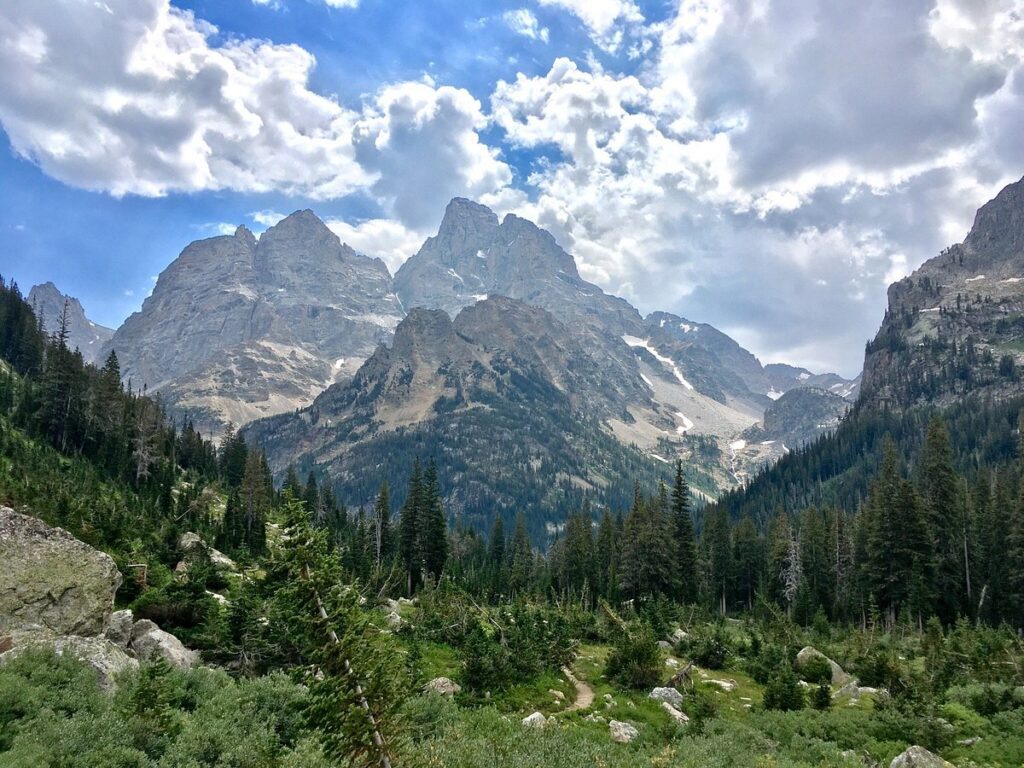
The Teton Range is one of the most dramatic mountain fronts on Earth, rising 7,000 feet from the Jackson Hole valley floor without any foothills.
Can’t-Miss Trail: Cascade Canyon Trail
The goal here isn’t a summit but a journey into the heart of the mountains.
A scenic boat ride across Jenny Lake cuts off miles of hiking.
he trail then climbs past Hidden Falls and Inspiration Point before entering the U-shaped Cascade Canyon.
You’ll walk on the canyon floor, dwarfed by the granite spires of the Grand Teton, Teewinot, and Mount Owen.
- Trail at a Glance: Moderate, 9.4-mile round-trip (with shuttle), 1,480 ft gain, 5−7 hours.
- Know Before You Go: Use the Jenny Lake shuttle to save time and energy. The parking lot fills before 9 AM in summer. This is prime bear and moose country, so be prepared.
11. Glacier National Park, Montana: The Crown of the Continent
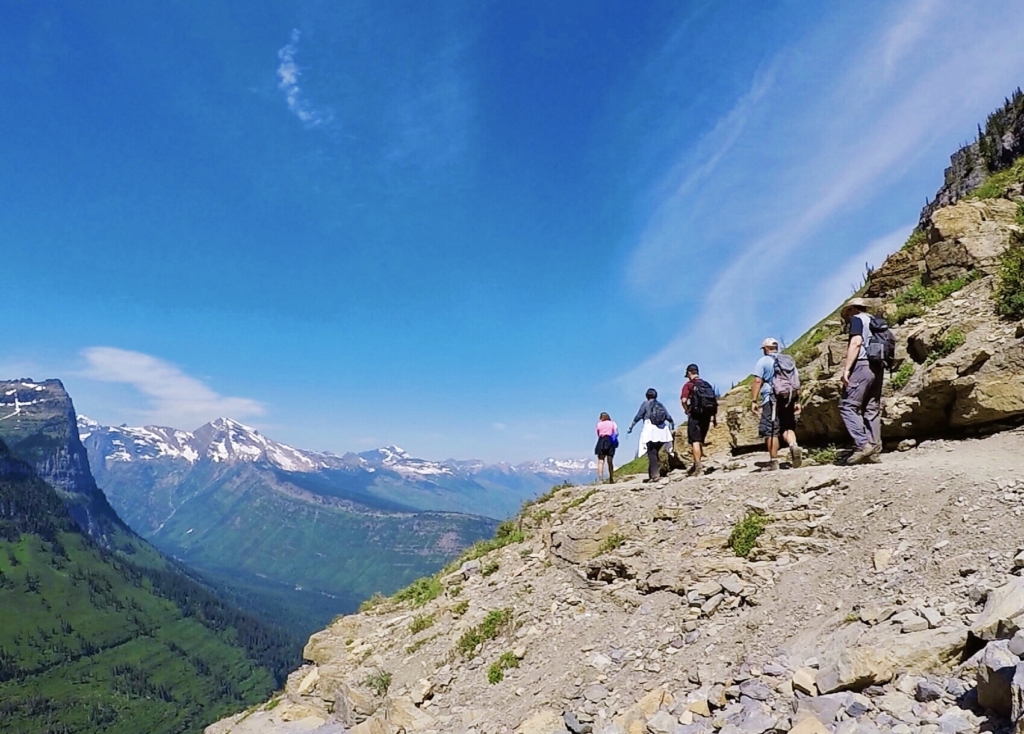
Glacier National Park is a landscape of jagged peaks, active glaciers, and pristine lakes. It is home to one of the most famous alpine mountain trails in the US, the Highline Trail.
Can’t-Miss Trail: The Highline Trail
This world-class trail is a journey along the Continental Divide.
Starting from Logan Pass, it traverses high alpine meadows filled with wildflowers and wildlife.
The most famous section is a narrow ledge where a hand-cable is bolted to the cliff for security.
The views into the glacially carved valleys are constant and spectacular. This is one of the most beautiful mountains in the US experiences you can have.
- Trail at a Glance: Strenuous, 11.8-mile one-way, 1,950 ft gain, 6−10 hours.
- Know Before You Go: Hike from July to September. This is best done one-way, using the park’s shuttle system. Logan Pass parking fills before sunrise. Bear spray is essential.
Historic Peaks of the East & Pacific: Finding the Best Mountain Views
From the ancient, weathered mountains of the East Coast to the unique volcanic landscapes of Hawaii, these peaks offer a different kind of grandeur.
12. Mount Washington, New Hampshire: Home of the World’s Worst Weather
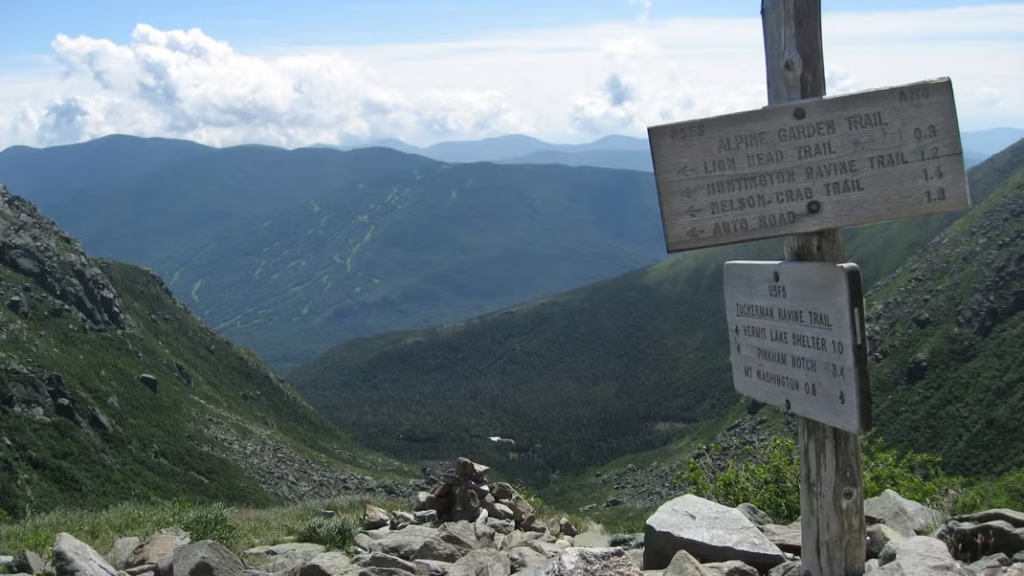
The highest peak in the Northeast, Mount Washington, is a place of extremes.
It’s infamous for its severe weather, holding the record for the highest wind speed ever recorded by a human.
Before you climb, know that you’re entering one of the world’s most extreme weather laboratories.
Can’t-Miss Trail: Tuckerman Ravine Trail
This is the classic route to the summit. The trail climbs to Hermit Lake before entering the massive glacial bowl of Tuckerman Ravine.
The final push is a steep, rocky scramble up the headwall and across the summit cone.
- Trail at a Glance: Strenuous, 7.2-mile round-trip, 4,250 ft gain, 5−9 hours.
- Know Before You Go: Summer is the only safe season for hiking. Weather is the biggest danger; conditions change in an instant. Bring full rain gear and extra layers, even on a sunny day.
13. Mount Le Conte, Great Smoky Mountains, Tennessee
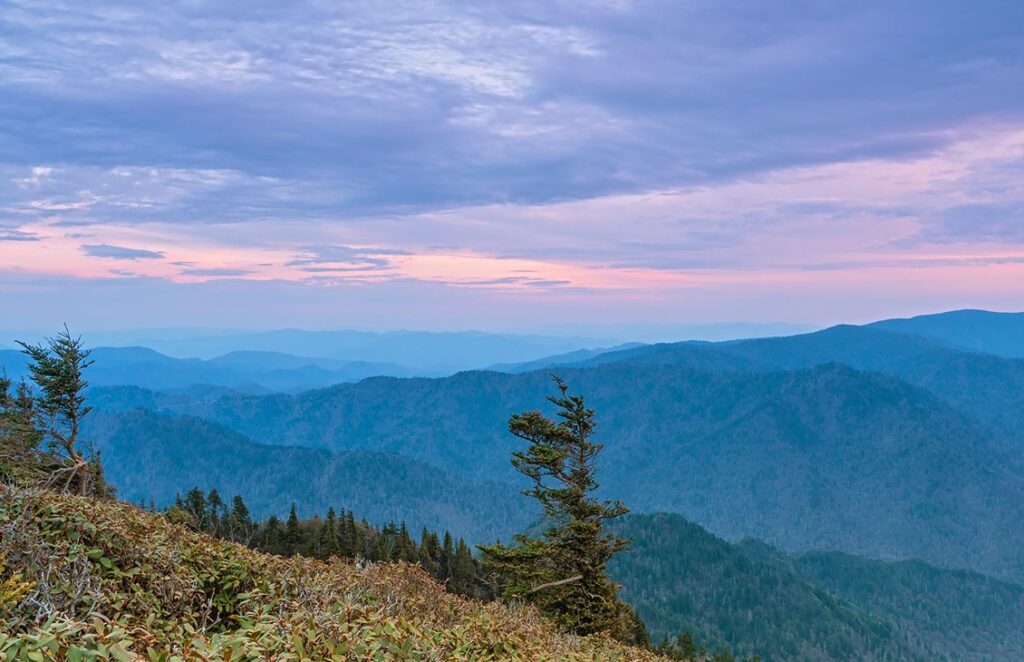
Mount Le Conte is an icon of the Great Smoky Mountains, America’s most visited national park. Its summit is home to the unique, hike-in LeConte Lodge.
Can’t-Miss Trail: Alum Cave Trail
This is the shortest and most spectacular trail to the summit.
It’s a “greatest hits” of the Smokies, taking you through old-growth forest, under the stone arch of Arch Rock, past Inspiration Point, and to the massive Alum Cave Bluff.
The upper sections feature narrow ledges with cable handrails if you’re up for some adventure.
- Trail at a Glance: Strenuous, 10-mile round-trip, 2,700 ft gain, 6−8 hours.
- Know Before You Go: This trail is extremely popular; parking lots fill at sunrise. A park parking tag is now required. Black bears are common.
14. Mauna Kea, Hawaii: A Sacred Window to the Stars
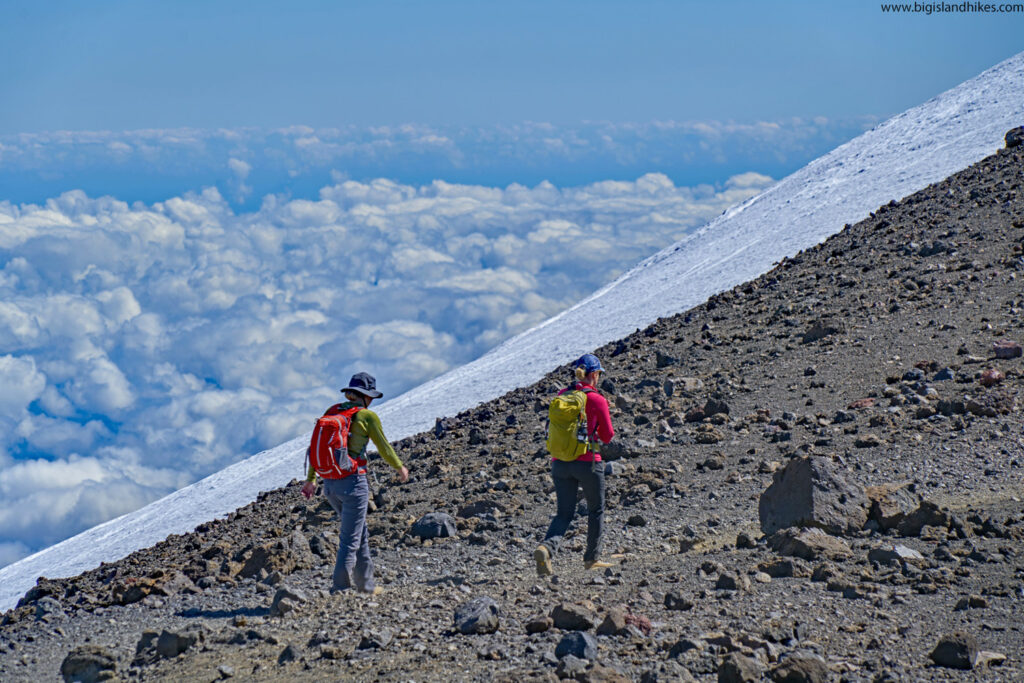
Mauna Kea is a dormant volcano and the highest point in Hawaii.
Measured from its oceanic base, it’s the tallest mountain in the world.
It is a sacred place in Hawaiian culture and a premier site for astronomical observatories.
Can’t-Miss Trail: Humuʻula Trail
This is a high-altitude trek through an alien landscape.
The hike starts at 9,200 feet and climbs relentlessly through scree and lava flows, often above the clouds.
The trail passes the sacred Lake Waiau, the highest lake in the Pacific Basin, before reaching the summit area.
- Trail at a Glance: Strenuous (due to altitude), 13.8-mile round-trip, 4,600 ft gain, 7−8 hours.
- Know Before You Go: Acute Mountain Sickness is the greatest risk. Acclimatize at the Visitor Information Station and turn back at the first sign of symptoms. The summit is sacred; please be respectful and do not stand on the true summit cone.
Go Get Them Mountain Boots Ready
From the wildflower meadows of Rainier to the sacred summit of Mauna Kea, we’ve journeyed to some of the most beautiful mountains in the US.
The effort of the climb is always repaid, not just with the best mountain views, but with a deeper connection to the wild and to yourself.
So, which of these iconic mountain trails in the US is calling to you? What peak will be next on your list? Tell me in the comments below!